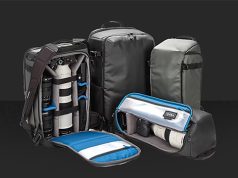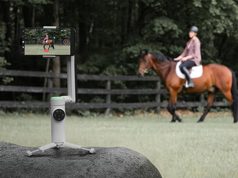I don’t know about you, but I am sick and tired of “Gift Guides.” It seems like this time of year every magazine and newspaper feels obliged to dress up their same old new product page with bells and holly marginalia to showcase some stuff, even putting the suggestions in price categories so you can figure who’s worth what kind of spending. I know, I’ve been guilty of it myself in the past, but have sworn off the practice as long as I have anything to say about it. But that doesn’t mean I don’t have ideas about what would make good gifts and in fact am about to suggest an idea that I think would make a great holiday promotion—making prints from negatives and slides.
This might seem obvious, but it has become more and more evident to me that these film records are being shoved further back into the storage cabinet as digital has taken over. It’s like thinking about driving that old car while a brand, spanking new one sits in the driveway. But those negatives and slides hold an important document and legacy for every family. I think it might just take some reminders to help bring them back into the light.
While most folks are shooting digital these days, and while film labs, especially those offering one hour service, are slowly disappearing, just about everyone has negatives (or slides) somewhere in their home. These negatives may or may not be in close proximity to the prints resulting from them—more likely than not they have long since found some distance from the shoebox or albums holding the prints. And that distance is likely to increase as time goes on, with a strong likelihood that they will eventually get lost or, worse yet, tossed.
New Revenue Streams
Now there’s no question that folks could make extra copy prints from the prints they already have in their albums, but there’s also no question that better quality can be obtained from the negatives themselves. When making a print from a print, every foible of the print itself gets translated to the copy, as well as every bend and possible tear. Yes, all can be fixed, but is it worth the time and effort? Some prints may be worthy of same, but others will go by the wayside due to the effort involved. If the image is from the old, old family album, which usually means the negatives are gone, there’s no choice but to use the print itself for the copy. But if there are negatives handy they are the best source for new prints.
In some cases the customer might have negatives but no prints. And being inexperienced with how color negatives work, most folks will have trouble reading them. That could call for a scan of negative strips and proofsheets of same, another great service you could offer. Take the burden off your customer of having to sort through the shoe box and squint at hard-to-read color negatives and you already have them invested in the project, without having to spend time on it themselves. In fact, some scanner/printers even allow you to produce a contact sheet that can be marked up, then re-scanned, to automatically make a print order.
Just as more and more of your customers have moved from film to digital, so have more and more labs, probably including yours should you have one on-site. That means re-orders are from scanned negatives and slides, and not via projection printing. If that’s the case you have another opportunity—creating CDs or DVDs from those scans. Just as there was a rush when VHS ceded the motion picture business to DVD, more and more folks will be eager to have their original negatives preserved digitally. That way they can share them and even print them on their own, though my guess is that given the right service they will be happy to bring them back to your shop for prints in the future.
Workflow Issues
Yes, all this means mounting a promotion and perhaps extra work on your part. But it’s an industry fact that less scanners are selling today than in years past, at least to the hobbyist trade. Indeed, because of the lessening demand I heard tell of rumors at this year’s Photo Plus that consumer scanners as a class might go away or at least be greatly diminished in the years ahead. That means one of two things – either people have already scanned all their “legacy” film images (highly doubtful) or that they have become so involved with digital and all its time grabbing nature that they have passed on taking care of their negatives and slides.
And that would be a shame. I have in the past in this column touted the benefits and great potential for bound photo albums made via the digital route, and still consider this a great market for those who get involved. But not every image need be put into a book, and not everyone wants to take the time to get a whole bunch of images together for the project. But that’s where reprints come into play, and by reprints I mean anything from 4×6 to 11×14 prints from negatives and slides. There’s been much talk about “the lost picture generation” caused by folks photographing their growing family with digital formats that may or may not be readable or useable by future generations. The simple fact is that as of today the most stable and lasting potential form of an image is a print.
Note that I used the word “potential.” The fact is that some forms of inkjet printing today, and some dye sub prints, are simply not going to last even into the next generation. And before film advocates begin to cast stones check your light box for the fade in both dye and density on Kodacolor negatives, Ansco slide films, Polaroid prints etc. So-called “archival consciousness” is fairly new among consumers who are only now beginning to recognize the importance of proper processing, printing and storage of image materials. Pros have known about this for years, but not as many as they would all like to think.
The point is that any service offered for preserving images needs to have the “archival” cachet in both word and deed. Does that mean it should be considered a “premium” service? You bet, and that’s part and parcel of what needs to be emphasized in this endeavor. There’s no longer any excuse to offer prints that are not archival, or at least allow for a choice between standard and archival materials. We used to do it with black and white printing—with RC for quick prints of immediate use and fiber processed properly for longer-term images, with pricing to match.
I remember when labs did everything they could to drive reprints, and especially Kodak telling us all that even a 2-4% bump in reprints from processed negatives would have a tremendous impact on everyone’s bottom line—from the store that took the order to the lab that fulfilled it. And as the digital printing infrastructure has matured we’re finally seeing the old D&P money starting to roll back in. But now we can add to this momentum by appealing to those who may have forgotten negatives and slides languishing in drawers and cabinets. Done right, this could prove to be another upward spike in business similar to what happened when movie film was transferred to VHS, and then to DVD all over again. It would also assure that the “lost picture generation” doesn’t reach back to include all those baby boomers who photographed their families on film starting in the middle of the last century. Allowing that to happen would be an abrogation of our industry mandate as the provider of precious memories for future generations to share. yy





